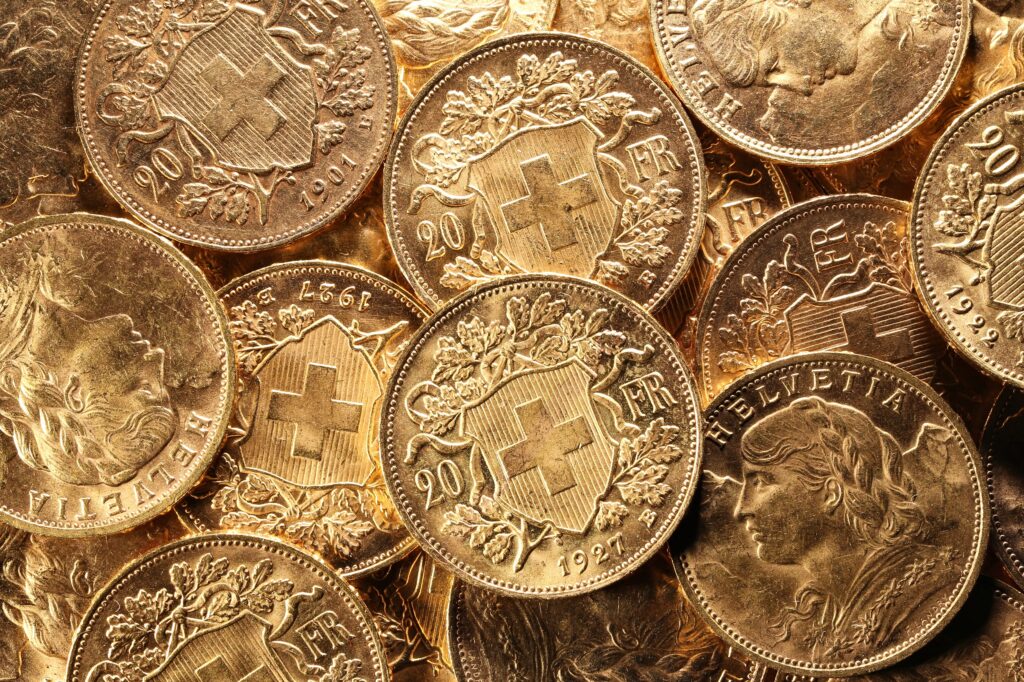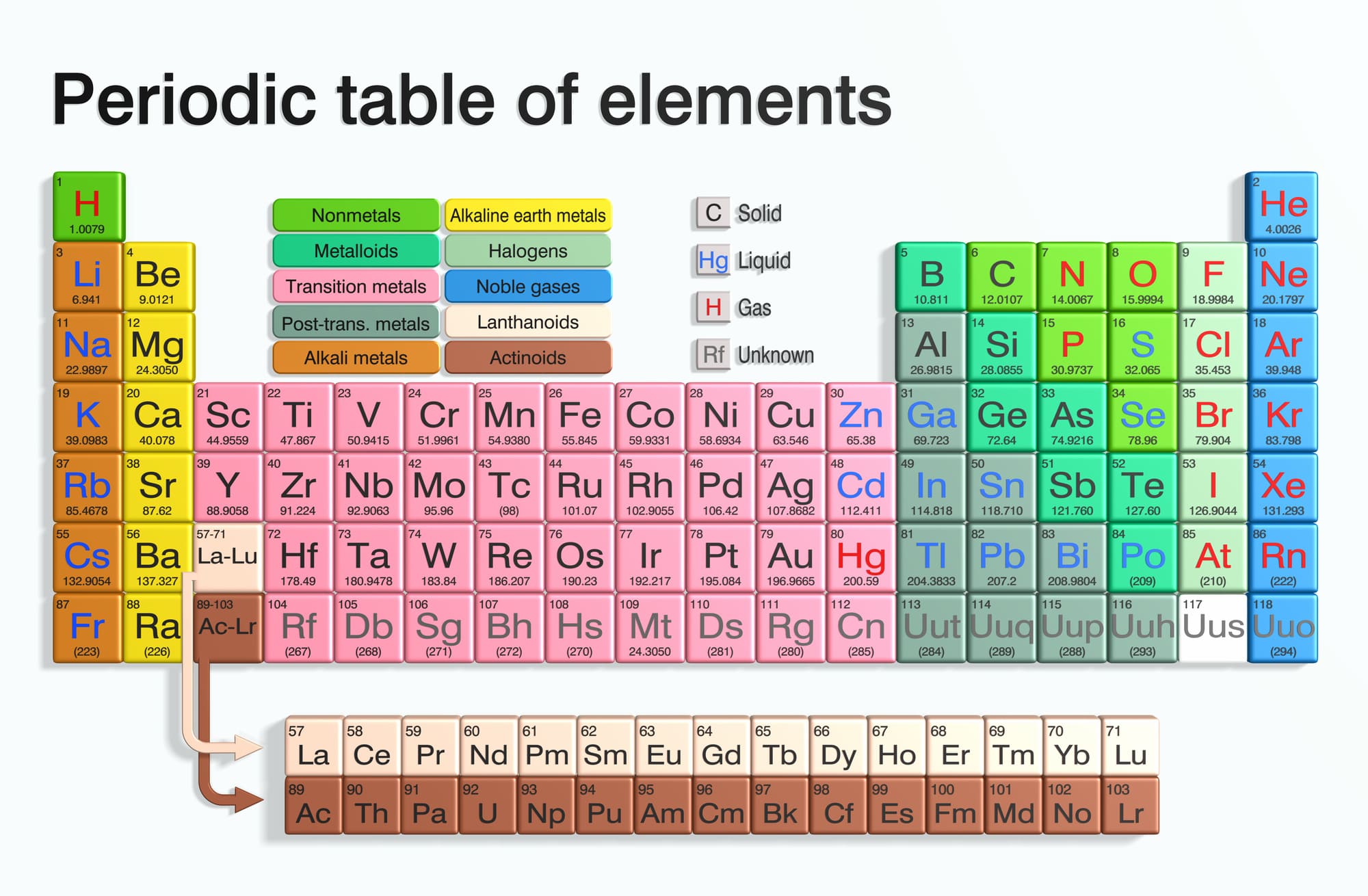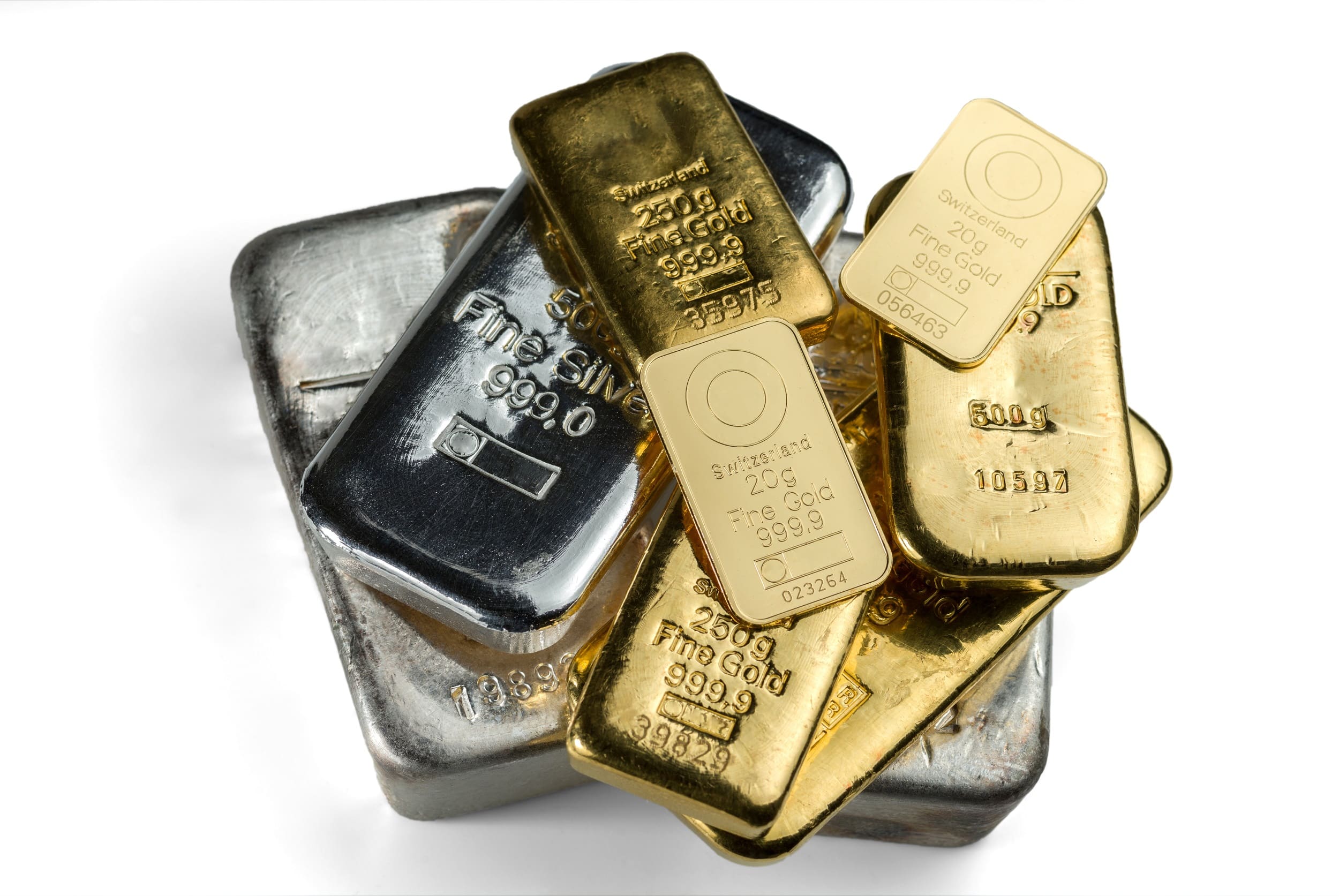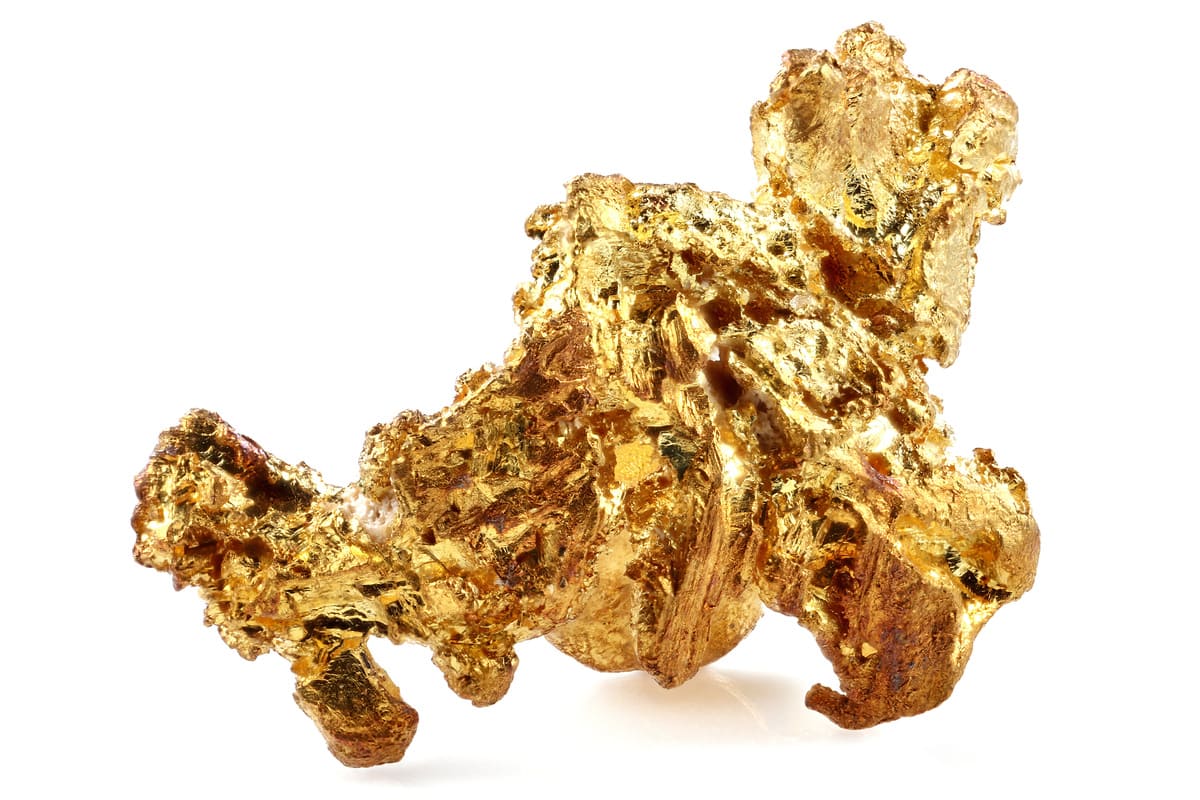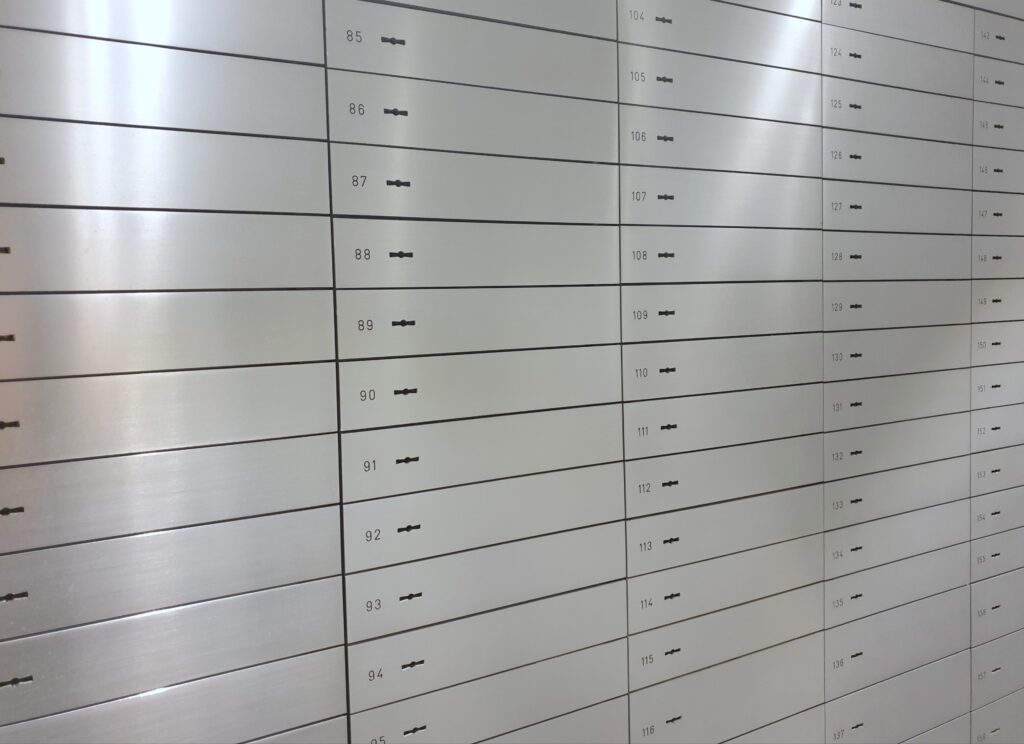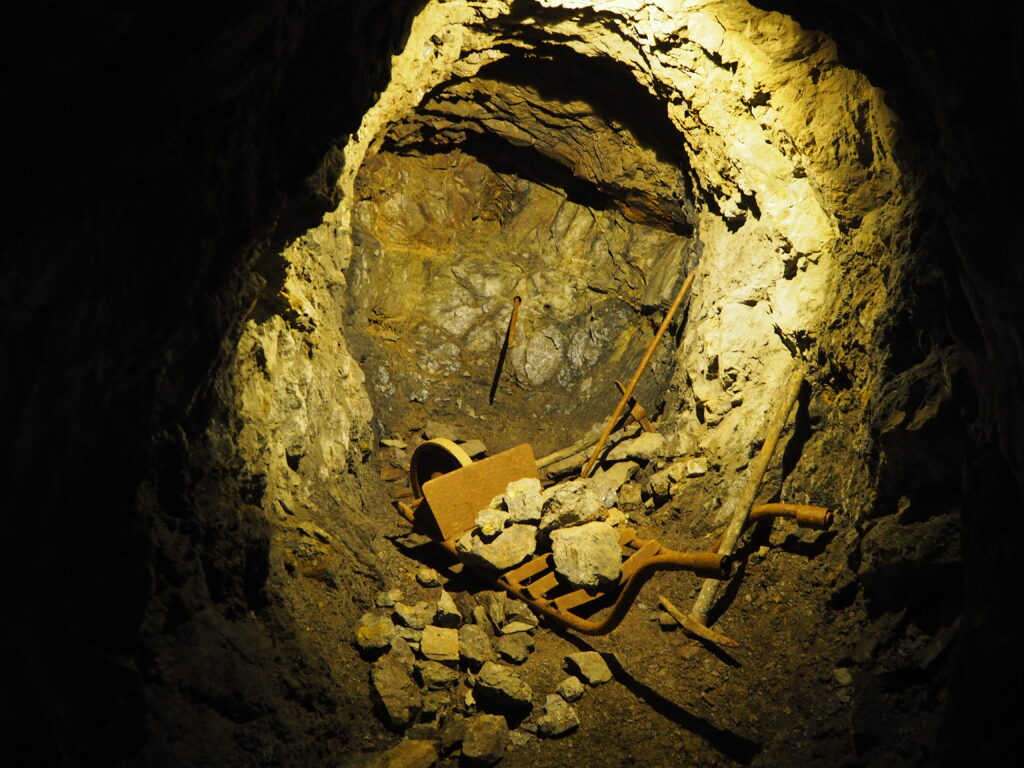Different ways to invest in gold
Additional information > Investment forms for gold, silver, platinum and palladium > Gold investments: The different options available
Wealth building with physical precious metals and intangible assets
Savers looking to invest their capital in precious metals can purchase direct or indirect gold products to secure or increase their wealth. Consumers have many different options but the purchase of physical gold bars or gold coins is probably the most familiar choice. Gold deposited with dealers or banks offers a further direct option. In addition, a range of securities or contracts relating to the yellow precious metal are available to interested buyers. We present an overview of these different value options.
- Disclaimer: The following article is for information only and compares various gold products investors can use to build wealth. However, it does not constitute investment advice. Furthermore, Swiss Gold Safe neither trades in precious metals nor does it make any purchase offers.
Gold is known for its high value density and versatile properties as a store of wealth. And because gold can be melted down and reprocessed over and over again if necessary, all the gold that has ever been mined is still in existence. However, the mining and extraction process is complex, so raw gold is always considered something of a rarity. Gold can be processed to make fine jewellery or stored as a currency reserve in central bank vaults around the world, and is highly valued by private investors, especially in times of crisis. The purchase of gold precious metal is considered to be more or less of a risk according to the form in which it is bought. The purchase process, and the extent of the specialist knowledge required, also depend on the chosen product format.
Physical gold – direct purchase
The simplest way to use gold to create wealth is to buy gold coins or gold bars from a precious metals specialist, or from a bank. Nowadays, this can be done in traditional over-the-counter fashion or via a reputable online shop – although such traders usually also have a retail outlet. And because physical bullion gold purchases are VAT exempt, buyers can exploit their investment capital to the full. Prospective purchasers can choose between countless types of investments and units and buy gold in large or small amounts.
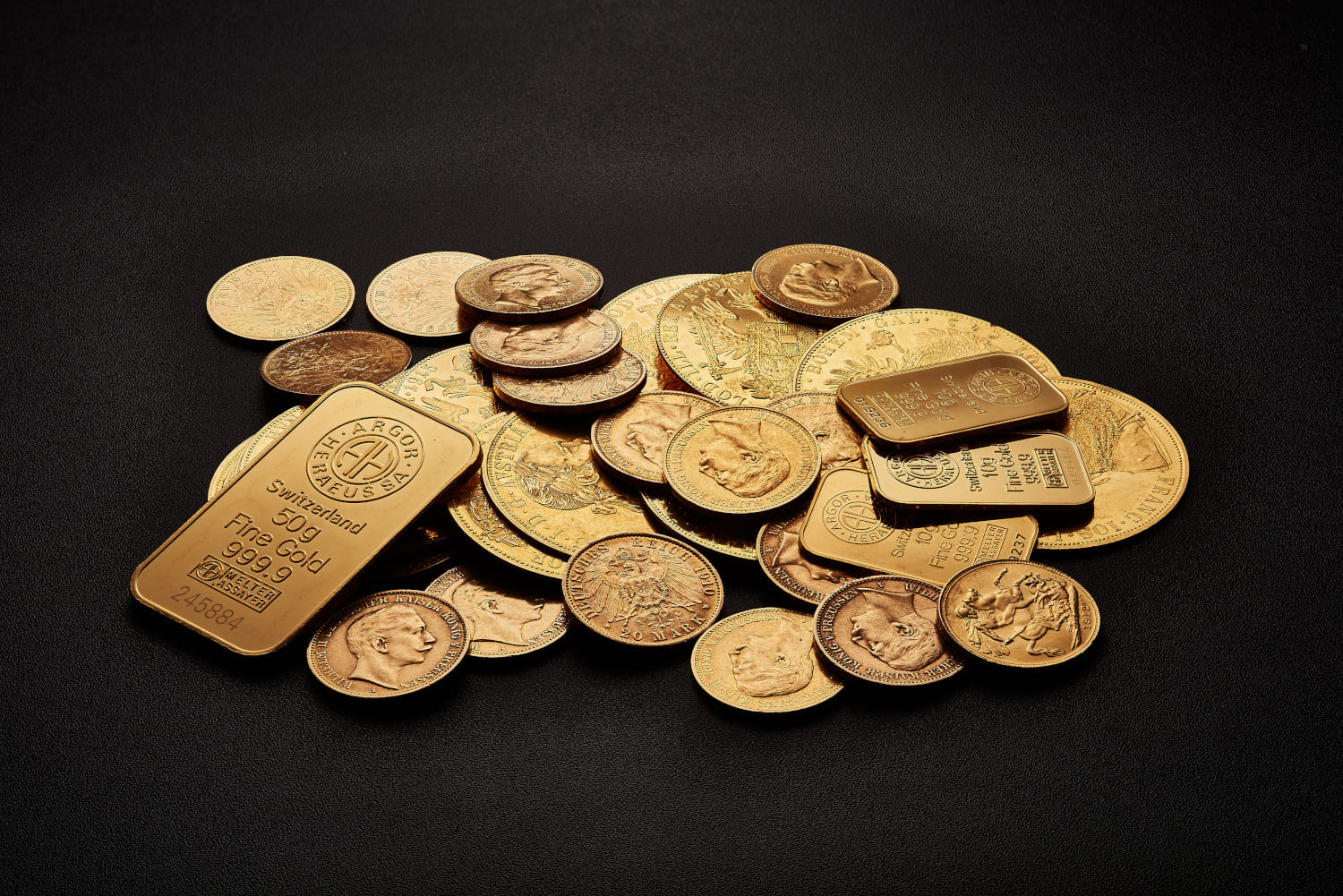
© Dmitry - stock.adobe.com
Most common bars and coins can be traded worldwide, and thus can be easily converted back into hard cash when required. And since transactions are based on the current gold price, investors can always rely on market-based buying and selling prices. Thanks to this transparent pricing structure, buying physical gold does not require any detailed specialist knowledge. However, it is worth pointing out that, because of their high value density, gold products will always require secure storage. Depending on the size of any proposed holding and your personal requirements, gold can be stored in a home safe, in a bank safe deposit box or with a bank-independent specialist provider.
- Brief summary: On purchasing physical gold, buyers become direct owners of a gold product. This means they have unrestricted access to a product they own.
Gold investment plans: Acquire your gold little by little
Anyone wishing to invest in smaller amounts of gold can also use gold investment plans. These are offered by precious metal dealers, banks, direct marketers or specialist service providers. Investment plans for physical precious metals are widely available, and less frequently offered in ETF or ETC formats (see below). Investors usually pay a fixed amount each month, receiving shares in the provider’s physical gold holdings in return. Specific products are often advertised, such as one-ounce Krugerrand gold coins or gold bars in small denominations of between 1 and 250 grams. Depending on the type of investment plan, you can invest in real, specific pre-selected products, and once your purchase has been paid for in full, it is ready for delivery. Alternatively, you can also invest in shares in larger bars, which attract lower surcharges, though this arrangement does not involve any delivery of gold.
In addition to the cost of the gold investment, gold buyers also pay additional service fees. Depending on the type of contract, there can also be additional costs associated with any gold delivery. There is an advantage to investors if the provider manages gold stocks as totally separate assets. Because, in the event of an insolvency, a gold investment then remains the property of the original purchaser. Otherwise, if such holdings were not designated as separate assets, they would automatically flow into the bankruptcy estate, with customers then only entitled to lower amounts of asset compensation.
- Brief summary: Gold investment plans are primarily designed for smaller investors, or for grandparents who wish to accumulate gold for the benefit of their grandchildren.
Gold deposits at banks or with specialist dealers
Many banks and precious metal dealers offer gold deposits to their customers. Investors then purchase physical gold from the sellers’ range of products. However, they do not take delivery of the coins or bars, but have them stored with the provider for safekeeping. That’s why such purchases are often referred to as vault gold. This usually involves collective storage of common gold products in standard units. This form of gold deposit offers users the opportunity to invest in gold regularly without having to worry about storage arrangements for themselves. It is often possible to sell back this type of holding in the same way.
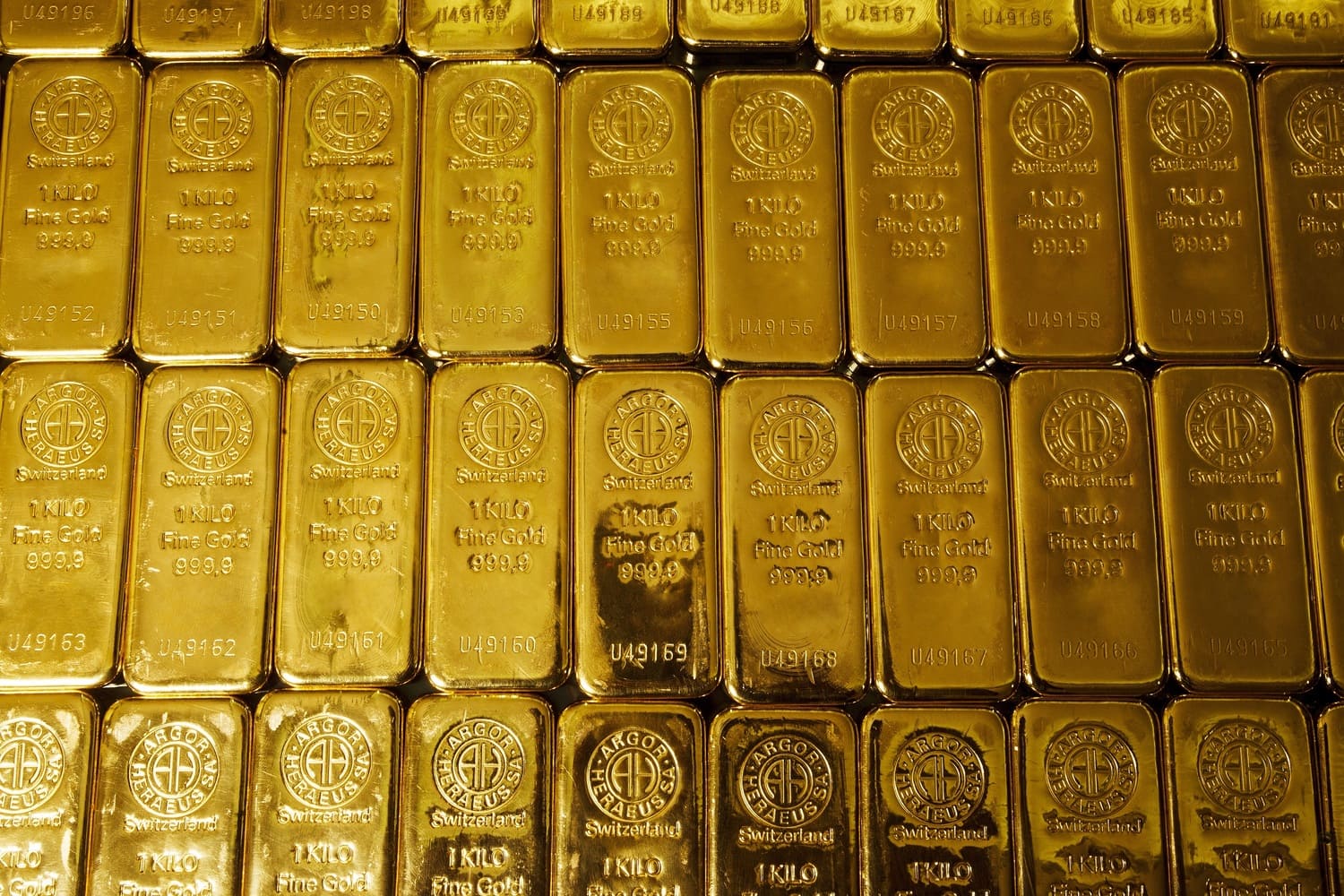
© photobc1 - stock.adobe.com
Customers can request a delivery and will then receive gold products of equivalent value to their deposits. Buyers must pay an annual deposit fee and, depending on the terms of their contract, ongoing purchase and sales fees too. So, because this arrangement does not generally allow the investor any inventory control, this option demands a lot of trust.
- Brief summary: Gold can be bought and sold regularly via gold deposits. Though this gold is physically present, it can only be inspected once it is finally delivered.
A gold account at the bank
Precious metal accounts offered by banks are also regarded as a common form of asset protection. Instead of a balance held, for example, in Swiss francs, these accounts use equivalent amounts of gold in ounces or grams. Investors continuously pay cash amounts into their gold account, which are then converted into the corresponding gold value at the current daily rate. This often means you get more gold for your money, because transactions take place at the current gold price and, unlike physical coins or bars, the premiums involved are lower. However, there are still ongoing account management fees, with the applied percentage rate often increasing in line with the value of your investment.
Depending on your contract, withdrawals are more likely to be made in hard currency, and less often in gold. This is because, although such accounts are usually backed by physical gold, this is not usually stored in standard denominations and is therefore not really intended for passing on to customers. As with all banking transactions, gold account investors must also allow for the general risk of a bank insolvency because a precious metal account is not covered by the Swiss statutory deposit protection of CHF 100,000.
- Brief summary: A gold account is suitable for those who prefer not to manage a gold holding for themselves, but wish to regularly invest in precious metals that closely track the gold price.
Gold ETFs with physical precious metal
this arrangement is that the securities are fully backed by physical gold. In effect, this means ETF buyers purchase shares in real gold. These shares can be bought and sold online in various amounts at any time during official trading hours, which means gold ETFs are considered a very flexible trading option.
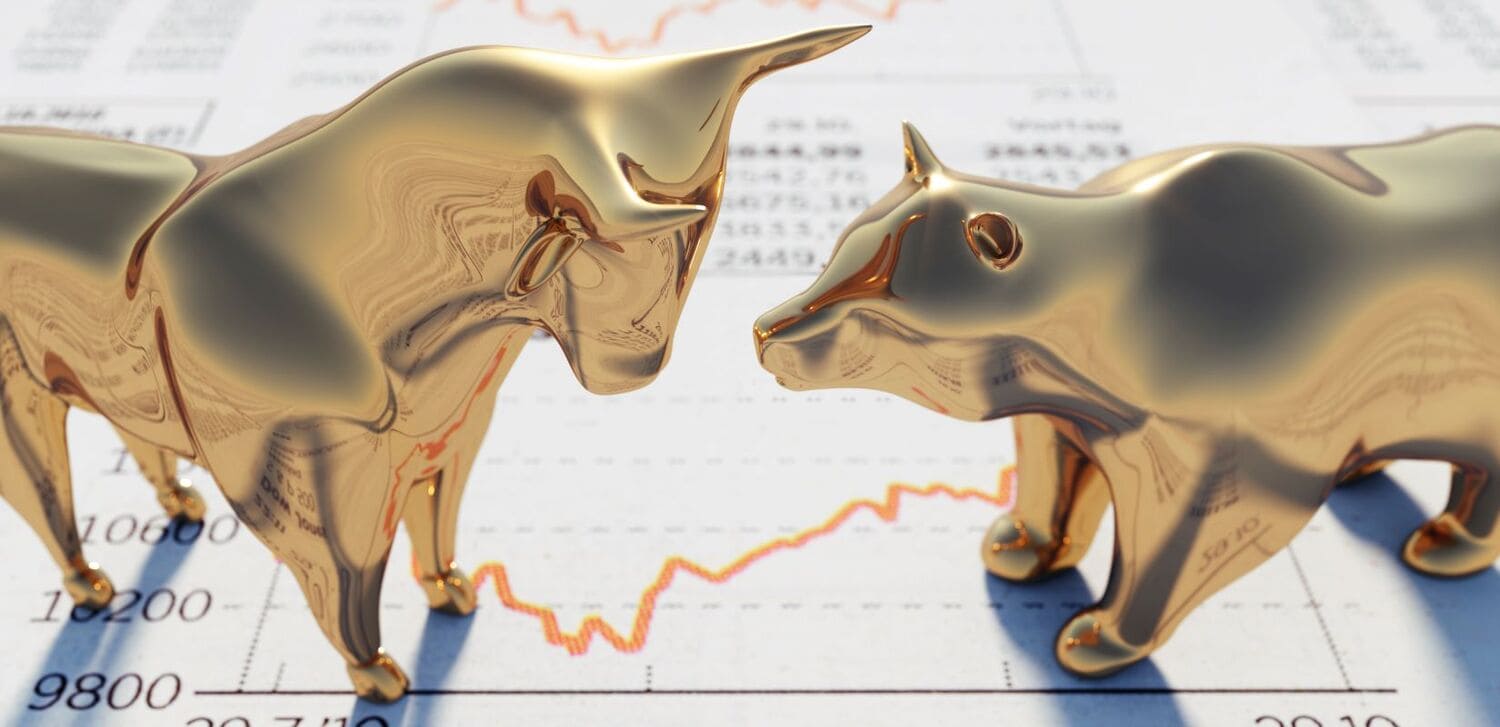
© peterschreiber.media - stock.adobe.com
However, there is no provision for any delivery of physical gold when an ETF is sold. This type of gold is usually stored in large 12-kilo bars – which have a high six-figure value in Swiss francs at the current gold price. So the balance which could be withdrawn would have to precisely conform to the quoted valuation. Investors are usually expected to pay fees for each individual transaction, and to cover the bank’s general fund management. There may also be brokerage fees involved.
- Brief summary: Gold ETFs are particularly attractive if physical gold shares are to be bought or sold at short notice, with the provider taking care of gold storage.
ETCs without physical gold
Exchange-traded commodities (ETCs) are related to ETFs. They can also reflect the gold price, but are not secured with physical gold. The gold investment element in exchange-traded securities can be provided in different ways. ETCs are often bonds such as gold futures (see below) or swaps (two-party contracts). The funds are usually based on several instruments simultaneously. Investors can buy or sell gold ETCs via a securities account held with a bank. However, unlike ETFs, investors are not buying fund shares but claims against the issuer. This effectively means accepting an increased counterparty risk, for example in the event of the issuer becoming insolvent.
Gold ETCs are relatively easy to trade during business hours. The bank will handle storage of any securities – however, you will be charged a custody fee for this service. There are further costs for transactions and fund management. In addition, you may also be liable for further broker-related fees.
- Brief summary: Gold ETCs can be traded just as flexibly as ETFs, but usually consist of different financial products, without any physical gold.
Gold shares from mines and refineries
If storing your own gold is not an option, you can also invest in gold shares. Such shares are typically available from gold mine operators and gold refineries, or through a broker. Buyers thus acquire shares in companies that mine or process gold. The prices of listed gold shares are influenced by the price of gold, but the precious metal itself is not the focus of these securities. So investors are not actually purchasing an interest in the gold that is mined, but in the economic success or failure of the share provider, whose fortunes will depend on many other factors. One consideration is political risk, because a sizeable proportion of gold mining is conducted in countries which are politically unstable. Investors acquire securitized shares in the companies and, as shareholders, they will then normally receive regular dividends from the gold companies.
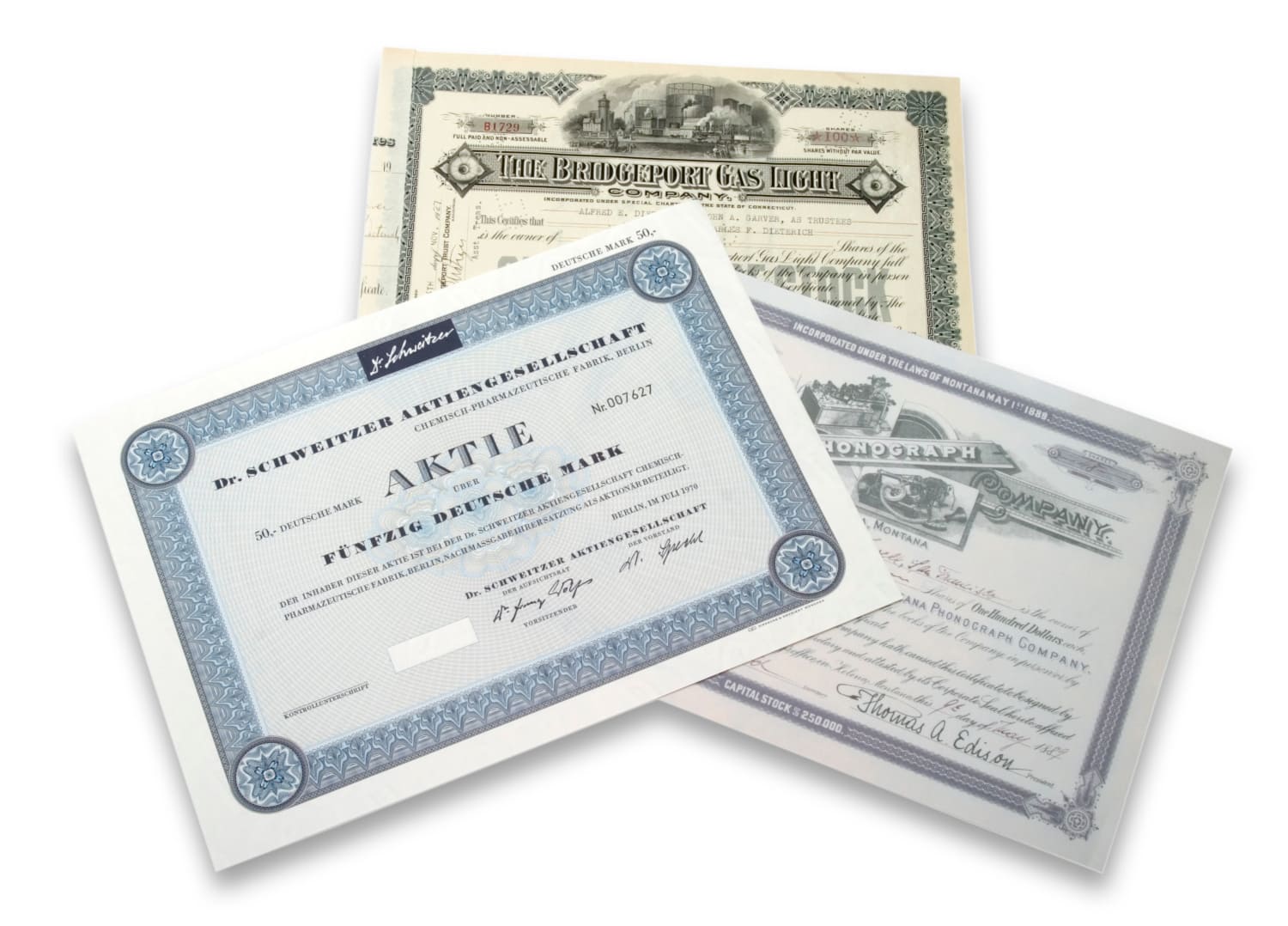
© euthymia - stock.adobe.com
Remember too that gold mines and refineries usually process other precious metals as well as gold. A share buyer is thus investing not only in gold, but also in copper or silver. This can prove to be an advantage or a disadvantage according to the market demand for these industrial metals. Investors should expect to pay ongoing costs to a broker who will charge custody fees for the shares.
- Brief summary: As with all company shares, gold shares are risky transactions because they are more difficult to assess, especially for beginners, and require advanced market knowledge.
ETF based on gold company shares
As an alternative to buying individual gold shares, investors can choose ETFs that invest in many different companies within the gold industry. Diversification can significantly minimise risk because the losses from one company can be offset by the profits earned by another. The advantage of this method is that buyers can get into gold-sector ETFs with a small budget. One disadvantage of this approach can be that gold-share ETFs focus on a single industry that is heavily dependent on the price of gold. There are, of course, other business risks, such as rising energy prices, which are a very relevant factor for any gold mining enterprise. As with all ETFs, management fees and other ongoing costs, such as custody fees, will also apply. Depending on the provider or broker, further one-off costs may be incurred when buying or selling shares.
- Brief summary: The bottom line is that buying gold-share ETFs is more expensive than acquiring individual gold shares, but the risk of making a loss is lower overall.
Gold futures for experienced investors
When buying gold futures contracts, buyers speculate on the future development of the gold price. A futures contract commits the investor to purchasing a defined amount of gold at a specific later time and at a set price. This is why such gold securities are referred to as futures contracts. They are traded on special futures exchanges and are often available from banks. Buyers can profit if the gold price exceeds the agreed amount on the agreed transaction date, while sales can be successful if the gold price is lower at that point. However, there is a high risk of loss if the gold price does not develop as expected over the time period involved.
Gold futures are also associated with various costs. Firstly, transaction fees are charged when a futures contract (position) is opened, and in addition, there are further ongoing fees until that contract is closed. This makes such gold investments more expensive and lowers the potential return.
- Brief summary: Gold futures require detailed product knowledge and careful market observation. The relationships are complex, which is why futures contracts are aimed particularly at professional traders and extremely experienced gold buyers.
Summary: Investing in gold
- There are many different gold products available for investors to secure capital or build wealth via precious metals.
- Those who value owning physical gold can buy gold coins or gold bars direct, but must also ensure they are stored securely. Gold investment plans also provide for the delivery of investment products.
- Gold deposits and gold accounts at banks, backed by physical precious metals, can also be used to directly invest in gold. However, gold delivery is not usually anticipated, which means there is no need to arrange your own storage.
- Exchange-traded ETFs and ETCs are differentiated by the use of gold-backed funds, and funds backed by other means. In general, gold securities can be traded easily and are a flexible option.
- Corporate investment in the precious metals sector can be realised via gold shares or gold-share ETFs. Shareholders participate in the commercial success of refineries or mining operations through share dividends, but must also bear the risk of failures.
- Investors who choose gold futures commit to buying exchange-traded futures contracts which speculate on the favourable development of the gold price at a future date. They are primarily designed for experienced and professional investors.


